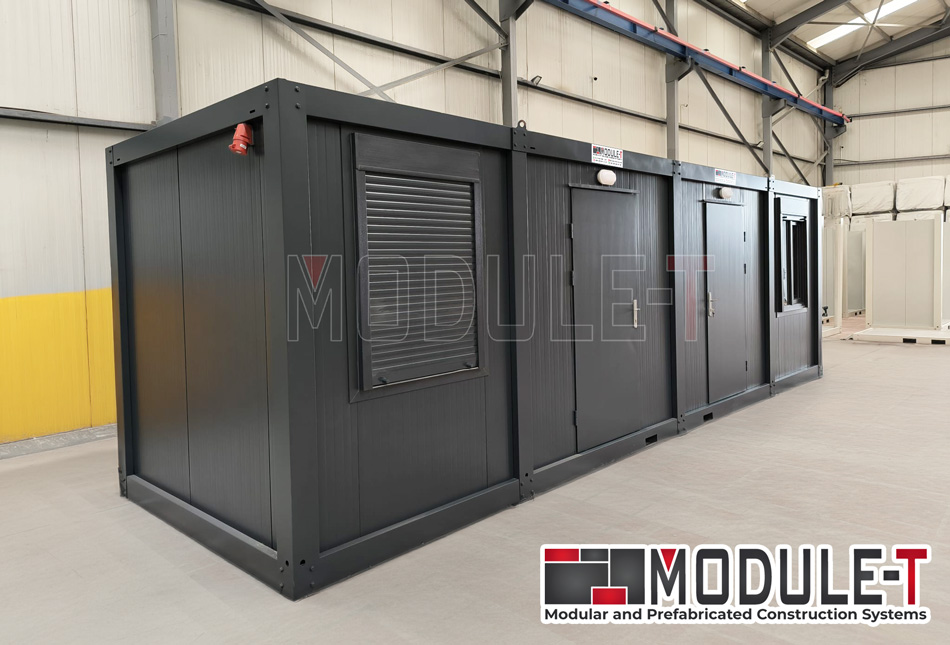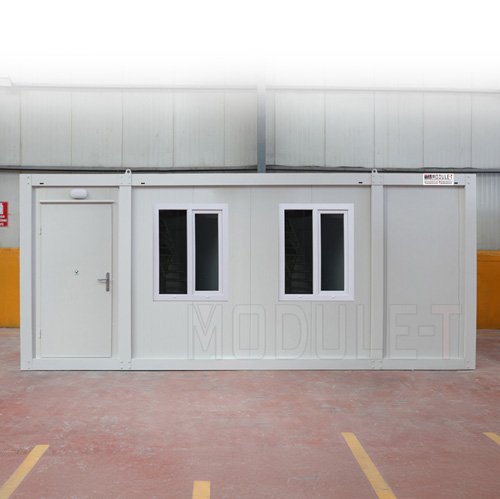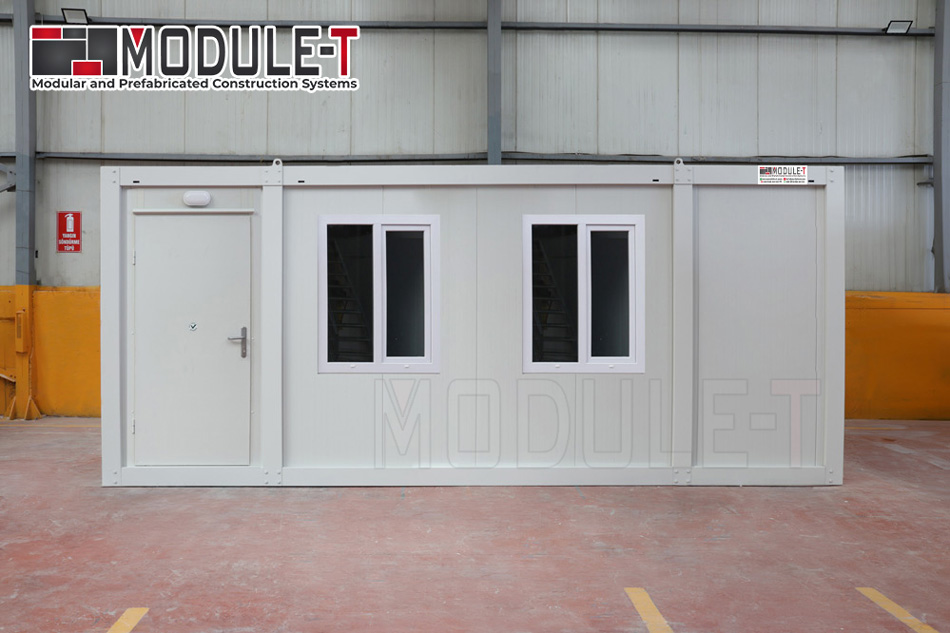The Evolution of Prefabricated Containers: A Comprehensive Guide
30 May 2024The evolution of prefabricated containers drives a major shift in the construction industry. These versatile, modular structures, also known as modular containers, are rapidly replacing traditional building methods due to their efficiency, flexibility, and scalability. From standardized shipping structures to highly customized designs, the evolution of prefabricated containers has unlocked new possibilities across various industries, including construction, mining, and oil and gas. This guide explores the evolution of prefabricated containers, their types, practical applications, challenges, and future potential. Discover how these innovative structures are transforming the way industries approach modular construction.
Understanding The Evolution of Prefabricated Containers
The evolution of prefabricated containers has been a game-changer in the construction industry, with prefabricated building manufacturers solving old problems with new solutions. Here’s a breakdown of the key factors driving their meteoric rise:
- Modular Construction: These structures are modular, allowing them to be quickly assembled and customized. This flexibility enables construction teams to adapt efficiently to new project specifications and changing site conditions, whether using locker containers for secure storage or sanitary containers for hygiene facilities on-site.
- Technological Advancements: New manufacturing technologies, like CAD and robotic prefabricated, have been developed, which means producing them is more precise and efficient. As a consequence, the structures of the buildings are of higher quality, and the projects are completed more quickly.
- Sustainability at the Core: Sustainability is the main reason for their increasing popularity. These buildings reduce their environmental impact and maximize resource efficiency by using eco-friendly materials.
- Cost-Effectiveness Redefined: Ready-made solutions are cheaper alternatives to traditional construction methods. Standardization of production processes and economies of scale result in lower project costs, while quality is not compromised.
- Versatility Unleashed: From temporary prefab office buildings to permanent residences, they can be customized to fit the needs of various applications. Their versatility in different environments and functions makes them a great option for architects, developers, and end-users.
The emergence of these solutions marks the beginning of a new era in building construction. Their structure, technological level, sustainability aspect, cost-effectiveness, and flexibility all combine to position them as a disruptive force in construction and a driver of innovation and efficiency in the industry.



Types of Prefabricated Containers: From Standard to Customized Solutions
Dissecting the wide variety of these structures reveals a range of options customized to the specific project requirements. Here’s a breakdown of the types available:
- Standard Shipping Containers: The evolution of prefabricated containers began with standard shipping units, typically available in 20-foot and 40-foot lengths. Due to their affordability and versatility, these units remain a popular foundation for many modular structures, finding applications in various sectors, including guardhouses and kiosks.
- High Cube Models: With extra vertical space, high cube units are ideal for projects that require more height, such as stacked living spaces or large storage facilities.
- Open-Sided Units: Designed with foldable panels or open sides, these units provide excellent ventilation and easy access. They are commonly used for retail pop-up shops, exhibition booths, or outdoor dining spaces.
- Refrigerated Units: Also known as “reefers,” these models have built-in cooling systems, making them perfect for storing perishable goods or operating in temperature-controlled environments.
- Modified Units: These models can be tailored to meet specific project needs and include additions such as windows, doors, insulation, or partitions, enhancing both functionality and aesthetics.
- Off-Grid Units: Equipped with renewable energy systems like solar panels or wind turbines, off-grid models are designed to operate independently, making them ideal for remote or ecologically sensitive locations.
- Custom-Built Solutions: Custom-built units offer limitless possibilities for specialized designs or unique settings. Architects and builders can collaborate to create innovative solutions tailored to a client’s specific needs and vision.
Applications Across Industries: From Construction to Retail
The evolution of prefabricated containers has made these adaptable structures a go-to solution across various industries. Here’s how they are driving innovation in key sectors:
- Site Preparation: These units serve as site offices, warehousing spaces, prefab worker camps, and even canteen containers for on-site dining. Their mobility and quick setup make them ideal for temporary projects.
- Hospitality: In hospitality, they create eco-friendly lodges, glamping sites, or boutique hotels. Their portability allows them to be installed effortlessly in remote or scenic locations.
- Retail: Retailers employ these structures to launch pop-up stores, food kiosks, or temporary showrooms. These cost-effective setups provide businesses with a flexible way to engage customers at high-traffic events and locations.
- Education: Schools and universities benefit from their units to build temporary prefab classrooms, libraries, or administrative spaces, offering flexibility during renovations or expansions.
- Healthcare: They are essential, functioning as mobile clinics, vaccination centers, or emergency response hubs. Their rapid deployment is crucial during disasters or health crises.
- Events and Entertainment: They are transformed into stages, ticket prefab booths, or VIP lounges at festivals, concerts, and sporting events. Their custom interiors and branding potential enhance the event experience.
Challenges in The Evolution of Prefabricated Containers
Though the evolution of prefabricated containers brings many benefits, challenges remain. Proper site preparation is essential to ensure stability, as uneven surfaces, poor soil conditions, or difficult access can create complications. Thorough planning and site assessments help avoid these issues. Logistics and transportation also present hurdles, especially for remote locations. Coordinating delivery routes, permits, and handling equipment ensures materials’ safe and timely arrival.
Customization options, though available, can be limited by the structural constraints of their units. However, incorporating features like cladded containers can enhance aesthetics while maintaining functionality. Insulation and climate control systems are crucial, particularly in extreme environments, to ensure energy efficiency, proper ventilation, and indoor comfort.
Long-term durability depends on regular maintenance and inspections. Addressing issues such as corrosion, wear and tear, and structural integrity helps extend the lifespan of these structures. With careful planning and upkeep, they can meet the needs of various industries while maintaining high performance over time.
Future Trends in The Evolution of Prefabricated Containers
The evolution of prefabricated containers will continue in the coming years, driven by innovative materials such as carbon-neutral composites, recycled plastics, and bio-based polymers. These materials offer greater strength, eco-friendliness, and expanded design possibilities. At the same time, smart technologies like IoT sensors, automation systems, and energy management tools will enhance functionality. These advancements will benefit modular solutions, including accommodation and showroom containers, by enabling efficient climate control, remote monitoring, and better energy management.
Off-grid prefabricated units equipped with solar panels, wind turbines, and battery storage will gain prominence, meeting the demand for energy-independent structures in remote or isolated locations. Vertical design, manufacturing, and construction integration will also improve efficiency by reducing lead times and costs. This seamless process will make these solutions more accessible while maintaining high quality and meeting the needs of industries like construction, mining, and oil and gas.
The evolution of prefabricated containers is reshaping the future of construction with flexible layouts, components, and sustainable designs. Urban development will increasingly adopt these systems for mixed-use and regeneration projects, helping address housing shortages while supporting eco-friendly city growth. Explore how Module-T can provide the right innovations for your next project as the construction landscape shifts toward sustainable and adaptive solutions.
CONTACT US
MODULE-T
KURIS KULE D-100 GUNEY YANYOL NO: 2 / 77-78 , KARTAL/ISTANBUL - TURKEY
PREFABRIK DIS TIC VE SAN LTD STI- +90 216 441 01 77
- Send Whatsapp Message
- info@module-t.com



